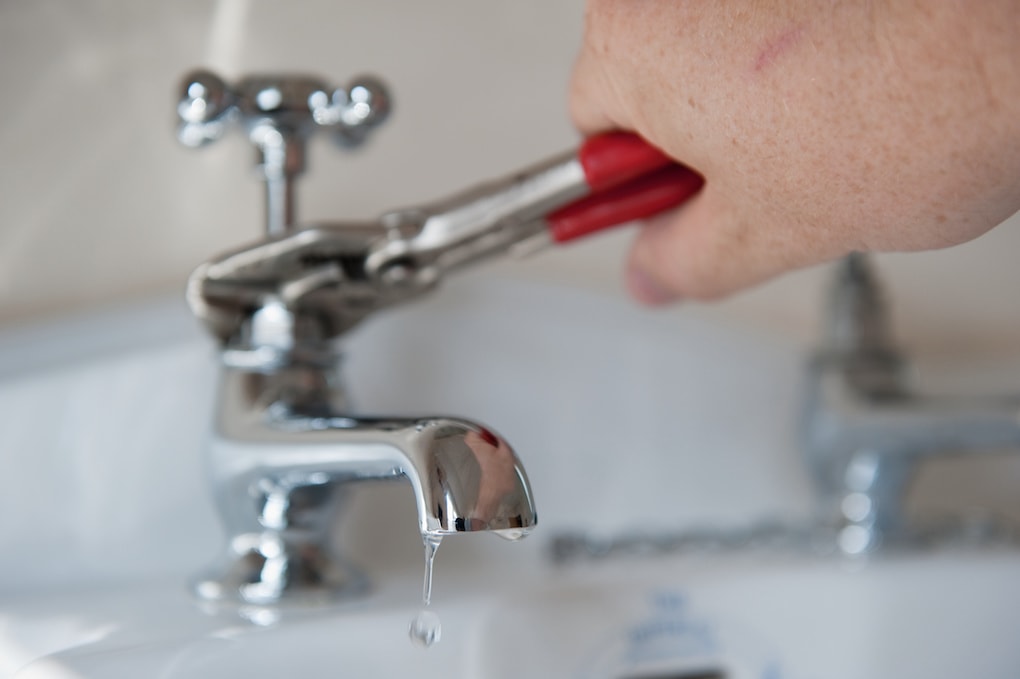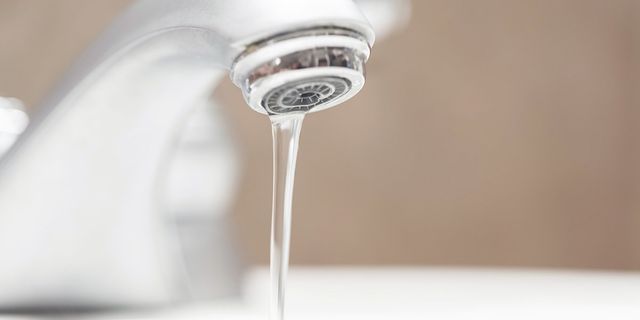An In-Depth Instruction to Dealing with Low Water Pressure in Your Home
An In-Depth Instruction to Dealing with Low Water Pressure in Your Home
Blog Article
We've encountered the article on 10 Reasons for Low Water Pressure in Your House below on the internet and accepted it made perfect sense to discuss it with you on my blog.

Low water stress in your home can be an aggravating trouble, affecting everything from showering to washing meals. If you're experiencing weak water circulation, there are several possible causes and solutions to check out. In this guide, we'll discuss typical reasons for low tide pressure and sensible steps to resolve the problem efficiently.
Intro to Low Tide Stress
Low water pressure takes place when the circulation of water from your faucets, showers, and various other components is weak than typical. This can make day-to-day tasks more difficult and less reliable. Recognizing the sources of low tide pressure is critical to finding the appropriate option.
Usual Causes of Low Water Pressure
Pipeline Obstructions
Over time, pipes can come to be clogged with mineral deposits, sediment, or debris, restricting the circulation of water. This is a common problem in older homes with galvanized steel pipes.
Rust
Rust within pipes can lead to leaks and reduced water stress. Corrosion accumulation can constrict water flow, specifically in aging plumbing systems.
Faulty Pressure Regulatory Authorities
Stress regulators are accountable for keeping constant water stress in your house. If they malfunction, it can cause low tide stress or irregular circulation throughout the house.
Local Supply Of Water Issues
In some cases, the problem lies outside your home. Municipal water supply concerns, such as main line leakages or maintenance job, can temporarily minimize water stress in your area.
Exactly How to Diagnose Low Tide Pressure
Examining Taps and Fixtures
Begin by evaluating the water stress at various taps and components throughout your home. If the concern is separated to details locations, it may suggest localized troubles.
Evaluating Pipes
Evaluate visible pipes for signs of leakages, deterioration, or blockages. Pay attention to any type of unusual sounds, such as banging or rattling pipes, which could suggest concerns within the plumbing system.
Consulting with a Plumber
If you're not able to identify the cause of low tide pressure, consider hiring an expert plumber to perform a detailed examination. They can recognize underlying issues and advise ideal remedies.
DIY Solutions to Take Care Of Low Tide Pressure
Cleaning Up Aerators and Showerheads
Natural resources can collect in aerators and showerheads, lowering water circulation. Eliminate and cleanse these elements regularly to enhance water stress.
Flushing Hot Water Heater
Sediment build-up in the water heater can limit circulation and reduce efficiency. Flushing the storage tank regularly aids remove debris and maintain optimal efficiency.
Examining Stress Regulator
Ensure that the pressure regulatory authority is working properly. Adjusting or replacing the regulator can help restore proper water pressure throughout your home.
Cleaning Clogs in Piping
For small blockages, attempt making use of a plumbing serpent or chemical drain cleaner to clear blockages in pipelines. Beware when making use of chemicals and adhere to security guidelines.
When to Call a Specialist Plumber
If do it yourself efforts fail to solve the issue or if you presume considerable plumbing issues, it's best to seek support from a qualified plumber. They have the experience and devices to resolve intricate concerns safely and properly.
Preventive Measures to Keep Water Stress
Normal Maintenance
Schedule regular maintenance for your plumbing system to stop concerns such as deterioration, leakages, and blockages. Attending to minor problems early can assist stay clear of more significant repair services later on.
Mounting a Stress Booster
Think about installing a stress booster pump to improve water stress in locations with consistently low flow. This can be specifically useful for multi-story homes or homes with high-demand components.
Monitoring Water Usage
Be mindful of water use practices and prevent overtaxing the plumbing system. Simple changes, such as incredible showers and laundry lots, can help maintain ample water pressure.
Verdict
Handling low water pressure can be irritating, however identifying the underlying causes and carrying out ideal solutions can bring back optimum circulation throughout your home. Whether it's cleaning aerators, evaluating pipes, or consulting with a plumber, taking proactive actions can ensure a consistent supply of water for your everyday needs.
FOUR WAYS TO FIX LOW WATER PRESSURE NOW
Turning on a shower or faucet only to find the water comes out in a sad, slow drizzle is never a good feeling. How exactly are you supposed to wash a pan or take a quick shower when it takes 10 minutes just to rinse off a little soap? The good news is that when your water pressure is bad, there's always a cause: typically one that can be easily fixed. Here are some of the most common causes of low pressure and what you can do to fix the issue:
DEBRIS AND MINERAL DEPOSIT BUILDUPS
If you notice low water pressure from just one or two of the fixtures in your house, the problem likely has to do with debris buildup. Water is full of minerals and other debris, all of which can accumulate in your pipes and on your fixtures. This can cause a blockage that affects how much water flows through. To fix this, try filling a small plastic bag with white vinegar, and use a rubber band to hang it around your showerhead or faucet. Let the head of the fixture soak for a few hours, and the vinegar should loosen the deposits.
WATER LEAKS
Leaks are another common cause of low water pressure. If water is flowing out of your plumbing through a hole or crack before it can reach your fixture, the pressure coming out of the faucet or showerhead will be lower. A plumbing professional is your best bet for finding and repairing a leak in your water supply pipes.
Leaks are another common cause of low water pressure. If water is flowing out of your plumbing through a hole or crack before it can reach your fixture, the pressure coming out of the faucet or showerhead will be lower. A plumbing professional is your best bet for finding and repairing a leak in your water supply pipes.
FOUR WAYS TO FIX LOW WATER PRESSURE NOW
Turning on a shower or faucet only to find the water comes out in a sad, slow drizzle is never a good feeling. How exactly are you supposed to wash a pan or take a quick shower when it takes 10 minutes just to rinse off a little soap? The good news is that when your water pressure is bad, there's always a cause: typically one that can be easily fixed. Here are some of the most common causes of low pressure and what you can do to fix the issue:
DEBRIS AND MINERAL DEPOSIT BUILDUPS
If you notice low water pressure from just one or two of the fixtures in your house, the problem likely has to do with debris buildup. Water is full of minerals and other debris, all of which can accumulate in your pipes and on your fixtures. This can cause a blockage that affects how much water flows through. To fix this, try filling a small plastic bag with white vinegar, and use a rubber band to hang it around your showerhead or faucet. Let the head of the fixture soak for a few hours, and the vinegar should loosen the deposits.
WATER LEAKS
Leaks are another common cause of low water pressure. If water is flowing out of your plumbing through a hole or crack before it can reach your fixture, the pressure coming out of the faucet or showerhead will be lower. A plumbing professional is your best bet for finding and repairing a leak in your water supply pipes.
Leaks are another common cause of low water pressure. If water is flowing out of your plumbing through a hole or crack before it can reach your fixture, the pressure coming out of the faucet or showerhead will be lower. A plumbing professional is your best bet for finding and repairing a leak in your water supply pipes.
A VALVE ISSUE
If you have low water pressure throughout your home, check your main shut-off valve to make sure it's completely open. You may also want to see if there's a pressure-reducing valve installed. If there is, have a plumber help you adjust the settings to get the pressure you're looking for.
OTHERS USING WATER
Believe it or not, your low water pressure could be caused by your neighbors. If you notice low pressure at certain times of day, it may be because you and the people living next to you have similar schedules - when everyone is showering at the same time, the pressure will be lower in every home. Low pressure throughout the neighborhood may also be caused by an issue with your municipal water supply. If that's the case, call the supplier to see if they're working on the issue.
https://www.rotorooter.com/blog/water-leaking/low-water-pressure-fixes/

We are very serious about 9 Reasons for Low Water Pressure in Your House and I am praying you liked our blog post. Loved our blog? Please quickly share it. Let another person locate it. Thank-you for taking the time to read it.
Click Report this page